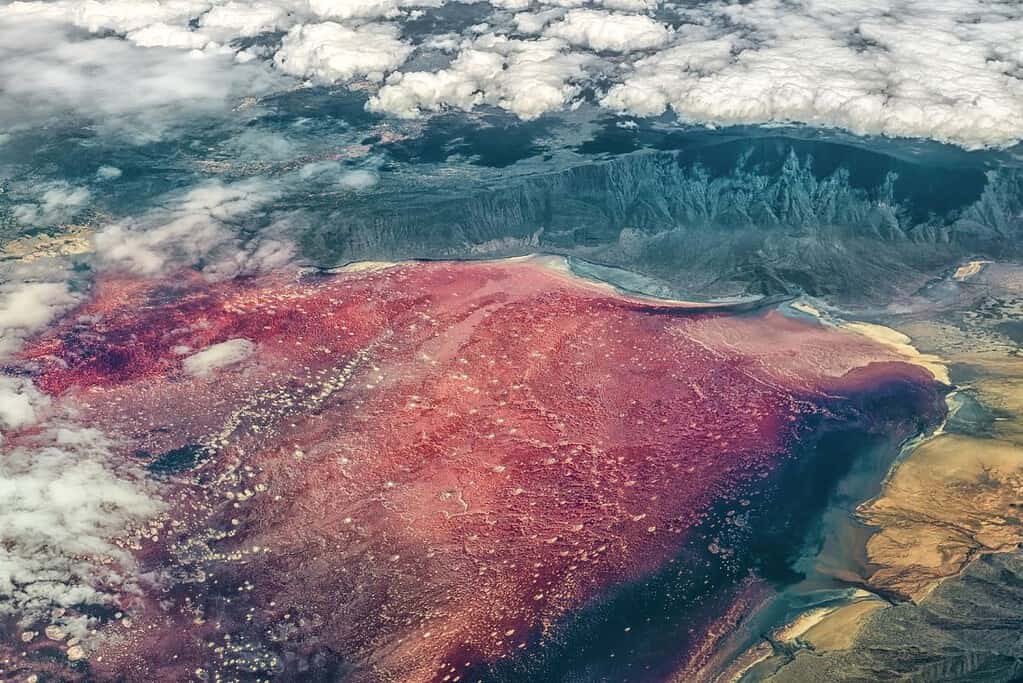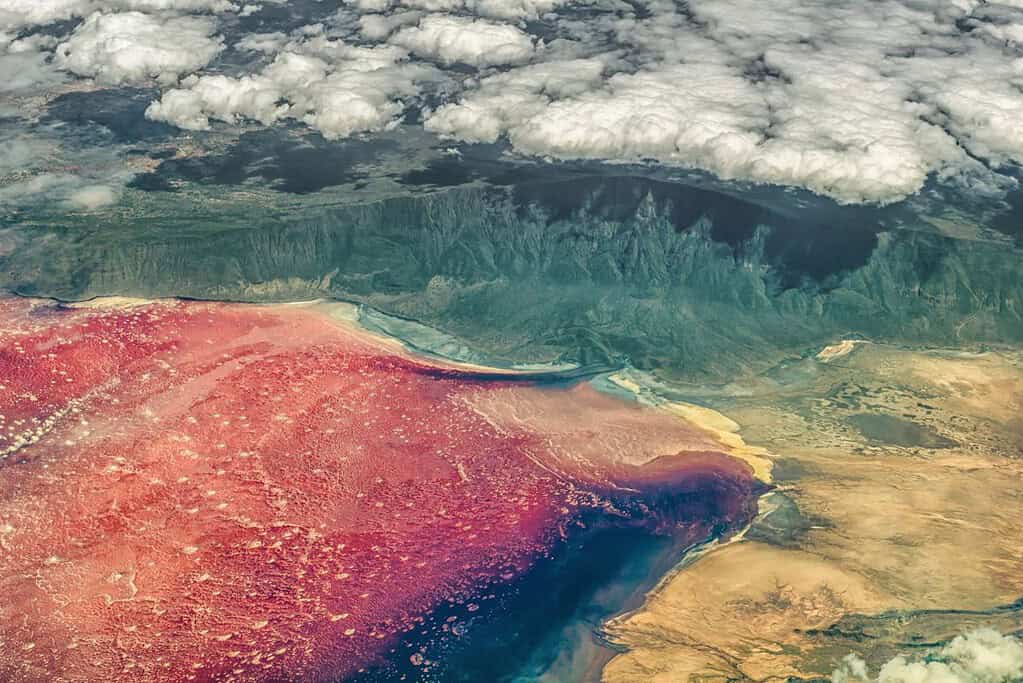Nestled in the remote northern region of Tanzania lies Lake Natron, a body of water that is as enigmatic as it is beautiful. Known for its otherworldly appearance and harsh environmental conditions, Lake Natron offers a stark contrast to the typical lush, verdant landscapes associated with East Africa. This blog delves into the unique aspects of Lake Natron, exploring its geological wonders, ecological importance, and the cultural significance it holds for the local Maasai communities.
Table of Contents
Geological Marvels of Lake Natron
Lake Natron is primarily fed by the Southern Ewaso Ng’iro River and mineral-rich hot springs. It is famous for its high alkalinity, with pH levels reaching as high as 10.5, akin to that of ammonia. This extreme alkalinity comes from the sodium carbonate and other minerals that flow into the lake from the surrounding hills. Interestingly, sodium carbonate is a compound historically used in Egyptian mummification, which explains the lake’s ability to preserve flora and fauna that become immersed in its waters.

The lake’s signature feature is its striking red and orange hues, a result of the thriving microorganisms that produce pigments to absorb sunlight. During the dry season, as water levels decrease, these colors become more pronounced, creating a surreal landscape that is a photographer’s dream.
The Flamingos of Lake Natron
One of the most remarkable aspects of Lake Natron is its role as the primary breeding ground for 2.5 million lesser flamingos, constituting 75% of the world’s population. The lake’s hostile environment, which deters predators, and its abundant supply of Spirulina algae, a favorite flamingo feed, make it an ideal breeding site. The breeding season aligns with the dry season, allowing flamingos to build nests on the evaporative salt islands that form as water levels drop.
Ecological and Environmental Challenges
Lake Natron faces ecological threats primarily from human activities, including proposed plans for hydroelectric power projects that could alter water levels and quality. Such changes pose a significant risk to the flamingos and other species dependent on the lake’s unique ecosystem. Conservation efforts are crucial and require coordinated actions between the Tanzanian government, environmental NGOs, and local communities.
Cultural Significance and Local Communities
The Maasai communities living near Lake Natron hold the lake and its surroundings as sacred. The lake is a source of salt and other minerals for livestock and has spiritual significance in Maasai rituals. The community’s traditional knowledge and practices have contributed to the sustainable management of the lake’s resources, demonstrating a balanced coexistence with this harsh environment.

Sustainable Tourism and Conservation Efforts
Sustainable tourism presents an opportunity for economic development while promoting the conservation of Lake Natron’s unique landscape. Tourists are drawn to the area not only for its ecological wonders but also for activities such as trekking to the nearby Ol Doinyo Lengai volcano, known as the “Mountain of God” among the Maasai. Engaging tourists in conservation narratives and encouraging respectful interaction with the natural environment and local cultures are pivotal.
Conclusion
Lake Natron is a testament to nature’s ability to flourish under seemingly inhospitable conditions. It challenges our perceptions of life and survival, offering valuable lessons in resilience and adaptation. Preserving this natural wonder requires a collaborative approach, balancing ecological integrity and community needs with the growing interests of tourism. As awareness of Lake Natron’s unique attributes grows, so too should our commitment to protecting this irreplaceable part of our world’s natural heritage.
By visiting Lake Natron, tourists not only witness its stunning beauty and biodiversity but also contribute to a broader effort that supports local communities and global biodiversity.
Read the Tanzania article here.
